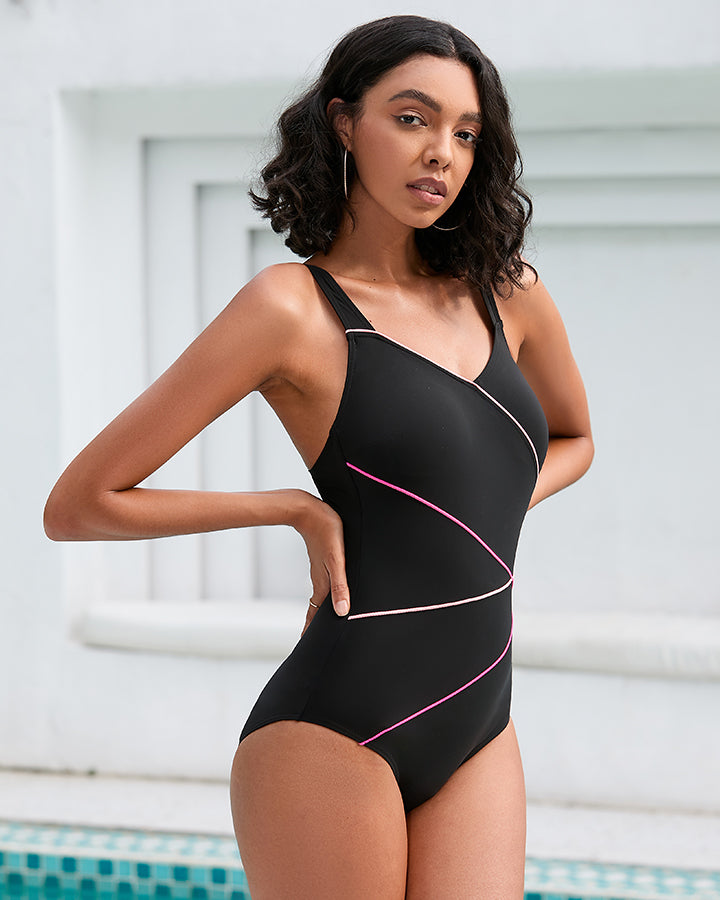
As summer approaches or as vacation plans unfold, many individuals find themselves on the hunt for the perfect swimsuit. While swimwear may appear to be a simple clothing category, the choice between cheap and expensive options can significantly influence your experience in and out of the water. In this article, we'll delve into the primary differences between cheap and costly swimwear, evaluating factors such as quality, style, comfort, durability, and value.
1. Fabric quality
One of the most distinct differences between cheap and expensive swimwear is the quality of the materials used.
Expensive swimsuits are often made from higher-quality materials (such as lycra, spandex, or specially treated fabrics) that are more durable and better able to withstand the rigors of chlorinated water. These materials not only provide enhanced stretch and flexibility but also offer better UV protection and chlorine resistance. Additionally, they tend to be better constructed, with more attention paid to aspects like stitching and reinforcement. It makes the swimsuit look better, be more durable, give you more support, and won't wear out and become see-through.
For cheap Swimwear, it is usually constructed from lower-grade fabrics like polyester blends or nylon, which are less dense and loosely woven. It means it will break down and wear out faster. Also, these swimsuits may feel less comfortable against the skin. Furthermore, the colors may fade quickly after exposure to sunlight and chlorine, diminishing the original aesthetic appeal over time.
2. Workmanship and Design
Beyond materials, the overall construction and design of swimwear also play a significant role in distinguishing cheap options from expensive ones. That’s why you will find the same/similar style but the wearing effect is different sometimes.
Mass-produced, lower-cost swimwear often prioritizes quantity over quality. For example, its seams may be poorly stitched, resulting in fraying or tearing over time. The cut and fit may also be standard, lacking the tailored design that complements a variety of body types.
High-end swimwear brands invest in meticulous craftsmanship. For example, double stitches and zigzag stitches have different costs. Zigzags require more attention and time, resulting in a more expensive swimsuit. As for hidden seams - designer swimsuits tend to have hidden seams so the fabric lies flat against the body. This makes the swimsuit look smoother when worn. Additionally, premium swimwear often features innovative designs that provide targeted support, flattering silhouettes, and technical features, such as adjustable straps or removable padding.
3. Fit and Production Size
Fit and production size are two major factors that make swimsuits expensive and influence the purchasing decision.
A common complaint among consumers of lower-priced swimwear is discomfort. Because its production size lacks thought, and the pattern maker is not professional enough.
For Top-tier swimwear, the pattern maker will consider more and often offers enhanced comfort through well-designed fits that can accommodate various body types.
Fit is important as it ensures that the swimsuit flatters your figure and doesn't cause any uncomfortable folds or restrictions. Production scale, on the other hand, refers to the number of units produced in a given run. The larger the production size, the lower the unit cost of the swimsuit.
4. Durability and Longevity
The ability of swimwear to withstand wear and tear is another crucial distinction.
Cheap Swimwear options tend to wear down quickly, especially when regularly exposed to chlorine, salt water, or direct sunlight. The elastic may stretch out, colors may fade, and the fabric may degrade, leading to the need for replacements within a single season.
Although, you pay for high-quality swimwear typically means investing in longevity. Designed to withstand frequent use, premium swimsuits can last multiple seasons if properly cared for. The durability of the fabric and construction ensures that they maintain their shape and color over time, providing better long-term value.
Moreover, have you ever noticed that a great swimsuit often has some super pretty details? Beading, fringed lace, crochet, hand stitching, and other delicate elements add charm to a fine suit. They also add cost. If you spend more money on a swimsuit, it will be apparent in many subtle aspects, all of which will add to the overall effect.
Conclusion
When considering swimwear, cheap and expensive options are ultimately a matter of personal preference, budget, and intended use. While cheap swimwear may appeal to budget-conscious consumers, its compromises on quality, design, and durability can lead to consumer dissatisfaction in the long run.
Instead, buying quality swimwear can enhance your beach or pool experience, offering comfort, style, and longevity. To get the most out of your swimsuit wardrobe, consider your lifestyle and budget. Whether you're choosing an affordable casual outing or opting for a luxurious special occasion, knowing the differences will help you make an informed decision.



